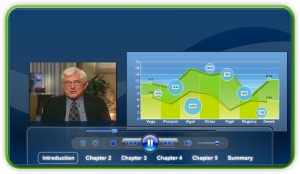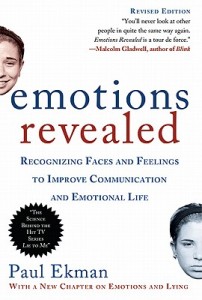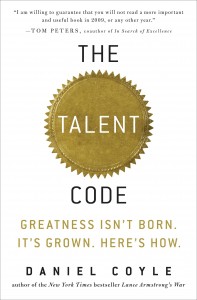Managing Interruptions and Managing to Interrupt
Posted By Judy on June 12, 2013

Like modern life, meetings, conversations, and public speaking often are full of interruptions. How do you keep from being interrupted? How can you politely interrupt when you need to be heard?
The challenge is exacerbated because of the accelerated speed with which meetings and conversations take place in today’s work cultures. Knowing how and when you can get a word in edgewise is important. Those who speak first and often may easily determine the course of the conversation. By the same token, companies lose valuable input when people who need more time to digest and think (aka introvert) are passed over. These lost voices are underestimated in many corporate cultures. Don’t squander the brilliance of those who think before they speak. The idea generation at the company will be less potent because valuable ideas were left unsaid or unheard.
To make the most of your communications and defend against interruptions – and to make your voice heard – here are some tips.
To assert yourself into a conversation, try these Speaking Tips:
- Make a bold gesture with your hands to show you have something to say.
- Lean forward with a puzzled look. This subtle interruption may work if the speaker is paying close attention to you.
- Look directly at the speaker’s eyes until they look back. Once you have their attention, smile or raise your eyebrows to acknowledge their connection and confirm what the speaker has just said and insert your comment. For example, “I agree and I’d like to add” or “That’s an interesting point and I’d like to add”.
- At a pause (however brief – even if it’s only to take a breath), state
- “I’m sorry, I’m not following you”
- “I’m sorry, can we pause a moment to give us all a chance to think about what you’ve said?”
- “I am not following you, would you please repeat that?”
- “May I stop you for a moment to ask a question?” State what you don’t understand, then ask your question.
- “Wow! That was a lot of information! Let’s pause a minute to consider what you’ve said.”
When you do get the floor, slow things down. Give yourself the opportunity to make your points clearly so they are understood by your audience and ask for their thoughts. Modeling a slower pace provides the opportunity for others to contribute.
Speaking Tips on how to handle the person who interrupts you:
- “Please! Let me finish.” Matching the energy of the interrupter.
- Place your hands and arms on the center of your chest while saying “I’m not finished.” This gesture will personalize your request and dissuade further interruptions.
- Use verbal tai chi to deflect the interruption. Thank the person for their point or question – and say that you will respond after you finish your point.
Speaking for impact is not an accident, it’s a skill. What specific techniques do you use to get your voice heard. Comment on this post and share your suggestions.

 "Seek connection, not perfection," Judith Grant, executive speaking coach.
"Seek connection, not perfection," Judith Grant, executive speaking coach.


 For many executives, the fear of mistakes and the fear of public speaking are a one-two punch to their performance. But, as Daniel Coyle explains in his book,
For many executives, the fear of mistakes and the fear of public speaking are a one-two punch to their performance. But, as Daniel Coyle explains in his book, 







 Presence
Presence
 Video conferencing has become ubiquitous in both the workplace and at home. Services like GoToMeeting, Webex, Vidyo, Facetime and Skype used with a webcam, tablet or Smartphone make it inexpensive and easy to hold virtual meetings with almost all the benefits of an in-person meeting. However, looking good on video requires different considerations than face-to-face meetings.
Video conferencing has become ubiquitous in both the workplace and at home. Services like GoToMeeting, Webex, Vidyo, Facetime and Skype used with a webcam, tablet or Smartphone make it inexpensive and easy to hold virtual meetings with almost all the benefits of an in-person meeting. However, looking good on video requires different considerations than face-to-face meetings. In our busy, fast-paced world we are at risk to accelerate everything – including our communications. Unfortunately, fast delivery can mean fast failure.
In our busy, fast-paced world we are at risk to accelerate everything – including our communications. Unfortunately, fast delivery can mean fast failure. I was working with a client last week who riddled his speech with industry jargon and acronyms. I felt frustrated and confused trying to figure out what he was trying to say.
I was working with a client last week who riddled his speech with industry jargon and acronyms. I felt frustrated and confused trying to figure out what he was trying to say.


 The Way we Talk Now
The Way we Talk Now


 Marissa Mayer, the newly appointed CEO of Yahoo!, is widely regarded as a visionary leader and talented engineer. Employee #20 at Google, she led critical strategic initiatives for the company and was considered a serious candidate to take the CEO slot to replace Eric Schmidt at Google.
Marissa Mayer, the newly appointed CEO of Yahoo!, is widely regarded as a visionary leader and talented engineer. Employee #20 at Google, she led critical strategic initiatives for the company and was considered a serious candidate to take the CEO slot to replace Eric Schmidt at Google.

